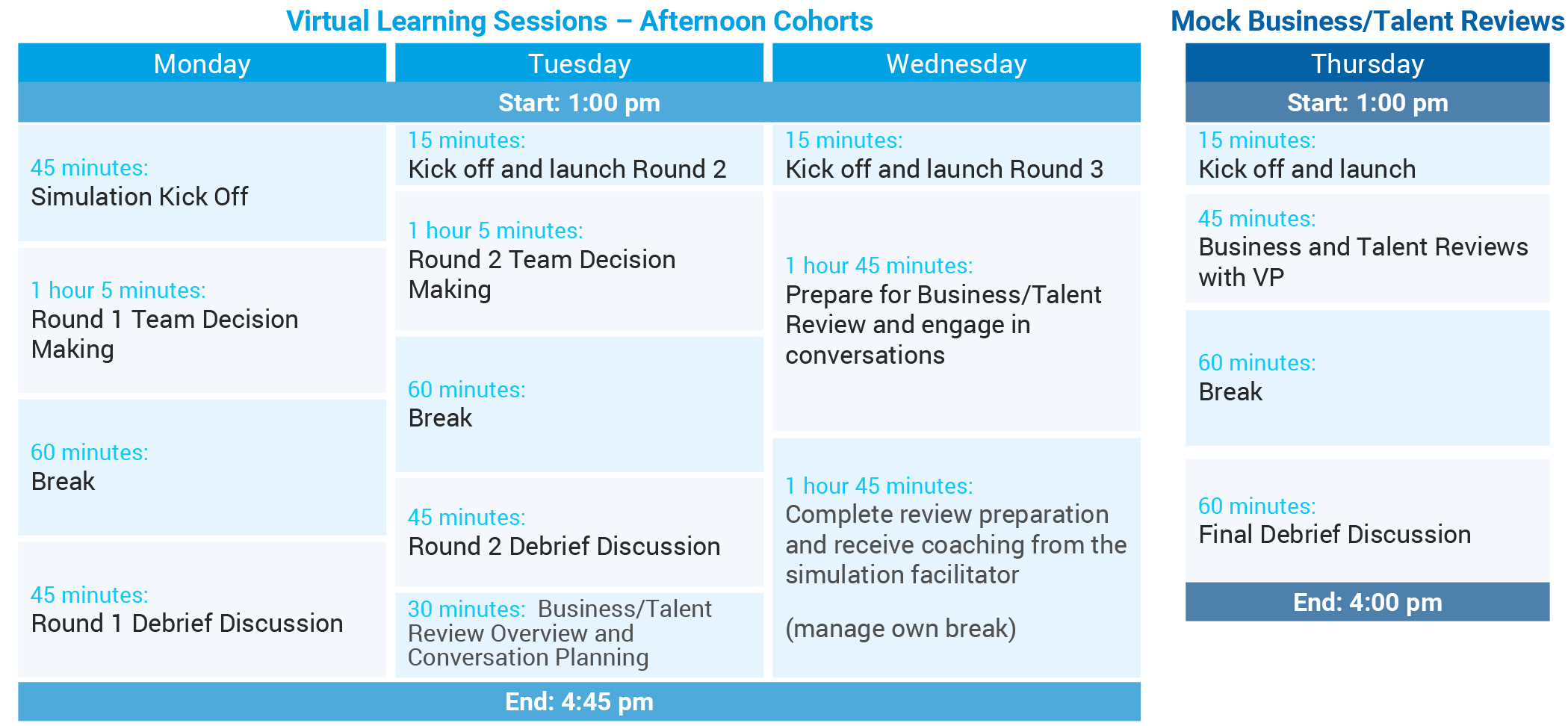Taking Top Sales People to Top Sales Leadership:
Accommodating the Leap to Sales Management
Abstract
A medical devices company found that many of their top salespeople, after promotion to Sales Manager positions, did not translate their individual high performance to high team performance. The emerging sales leader program, which includes three weeks of development over a three-month period, presents new frameworks and tools for leading and managing; case studies; interactions with experienced sales leaders; and a customized business simulation experience. It has generated impressive and measurable impact for its alumni, including promotability and diversity in new sales leadership.

Challenge
The client sought to improve the readiness of its high-performing sales employees to transition into manager roles. Sales representatives were deemed “high-performing” based on excellence in selling and account development outcomes. As these employees, however, were promoted into their first step as sales leaders, several gaps in performance emerged, including managing a diverse team with a range of performers; leveraging partnerships in the organization; and communicating approach to senior leaders. Many sales leaders either burned out or left the company after only a year or so into their management tenure.
Solution
The emerging sales leader program is a multiple-phase event targeted to a pool of high-performing sales representatives wanting to be promoted into their first sales management role. Over the course of three months, participants spend three weeks of focused development that culminates in an Insight Experience team-based capstone simulation experience. Each phase is designed to build leadership capabilities and create a bench of prepared Sales Manager candidates. The simulation presents the promotion pool with several scenarios focused on leading sales excellence through a team (rather than individuals). In the simulation, participants grapple with leadership dilemmas that require them to delegate, prioritize, and develop a team of salespeople and their clinical support staff. Woven into the business challenge is a broader opportunity to recognize strategic prospects beyond participants’ own scope of control, which benefits the company.
Learning Objectives
As a result of the simulation portion of the program, participants develop and improve skills to:
- Practice critical thinking for a team and an account.
- Balance the management of their team’s interactions with a customer with other business needs.
- Frame issues as a leader and communicate at a strategic level with their team and their leadership, using the Insight Experience Strategic Communication Model™.
- Balance short-term issue management with long-term team goals and development.
- Leverage internal stakeholders by building relationships.
- Maximize team development opportunities and work effectively with reps and clinical specialists of varying tenure, strengths, and development opportunities.
- Recognize and communicate larger strategic opportunities.
Design Highlights
The program design includes three major components: management and leadership content frameworks and activities, a customized business simulation, and mentorship from experienced sales leaders. To design the program, the core client team conducted extensive interviews and surveys of current reps, new Sales Managers, experienced Sales Managers, and VPs to understand common transition gaps, best practice behaviors, and criteria for success in securing the promotion. The findings from this process highlighted priorities for the structure and the content of the program.
The client team curated a compilation of widely accepted leadership concepts and created its own content in multiple areas.
The capstone experience of is a custom-designed business simulation that gives participants the experience of a Sales Manager.
Agenda
In the simulation, participants work in small teams of four to six people. They take on the role of a new Sales Manager in a fictitious region for which they are responsible for 12 sales reps and four clinical specialists.
Participants make decisions across three rounds with a learning debrief in between each.
- Round 1: Critical Thinking. Teams must strategically select which information to pay attention to for the business and their team; perform a SWOT analysis of the account; communicate their frame on the opportunity; make strategic coaching choices; and test their assumptions.
- Round 2: Leading People. Teams are presented with a range of issues from each team member, in which they must select from approaches that include managing the issue themselves or leading through others on the team. They also make decisions about how to spend their time as a leader.
- Round 3: Mock Vice President Meeting. Participants have an opportunity to role-play with two members of their team to better engage them and glean information about the business. They then prepare to meet with a VP to discuss their assessment and plans for talent and the business in their region. These meetings are led by an experienced sales leader, who gives candid feedback and shares personal experiences with the team.
- The final debrief discussion focuses on the best practices of a business and talent review. The facilitator prompts the VP role players (one per team) to offer guidance about effectiveness in each area and share their own experiences. The final simulation results are then shared with the group.

Model
Teams make a series of decisions over three rounds and then use feedback and results from each round to inform future decisions. Their choices to delegate and seek insights also inform which information they receive in each round.
After each decision round, the simulation model reports these metrics to the teams:
- Sales leader profile: Critical Thinking; Developing People; Strategic Partnering.
- Team performance: People Skills; Motivation; Business Acumen; Product Knowledge.
- Customer satisfaction.
- Operational excellence.
- Sales across three product categories.
Equally important is the qualitative feedback that each team receives. Not only do teams see the metrics above, but they also get additional context in response to their decision sets so that they understand their improvement or decline. Pictured here is an example of the blend of quantitative and qualitative feedback that teams receive.


Simulation Overview
Working in teams, participants make the decisions of a new Sales Manager in a business unit at the fictional Health Products International (HPI), which sells a wide variety of health products and devices for critical, chronic, and preventive care worldwide. HPI has four operating units and multiple cross-unit functions in an Integrated Global Services organization. The participants’ business is focused on a portfolio of products within a geography. Teams receive an email from their Vice President, requesting a review of the business and talent in three weeks. The review will focus on one strategic account called Weaver Health System.
During the simulation, teams focus on the members of their team in the Weaver Health System account. These include four of the sales reps and two of the clinical specialists, pictured below. Also at the Weaver account for HPI is a Key Account Director. Participants meet the reps and the clinicals and discuss their capabilities.

They must simultaneously accomplish two objectives:
- Prepare for the review of business and talent with their Vice President—with a focus on one hospital system account.
- Manage ongoing issues in the team and the business.
History and Results
The client measured employees’ sentiments about working at the company and how supported they feel. The average responses from those who experienced the emerging sales leader program are overwhelmingly positive, scoring 25-57 points higher than other employees. In addition, its graduates are retained at a rate 10% higher than the company average. The program also promoted diversity in the commercial leadership pipeline, resulting in a significant increase in candidates from underrepresented groups.
The program won a 2021 Gold award from the Brandon Hall Group in the category of Best Results in a Learning Program.











